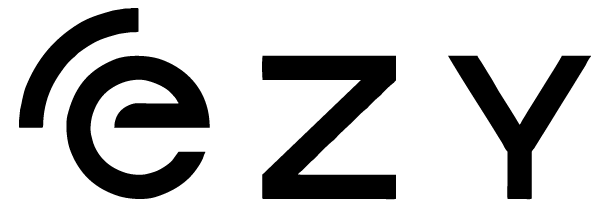In the dynamic market of real estate, the manner in which professionals present themselves and connect with clients, peers, and leads has undergone significant transformation. The shift from traditional paper-based business cards to innovative real estate digital business cards marks an evolution in personal branding and networking strategies. This transition not only encapsulates the essence of modern professionalism but also aligns with the technological advancements shaping the industry. Reflecting on this shift, the article delves into an in-depth comparison between the tangible costs and benefits of paper and digital business cards for real estate agents, underlining their impact on lead generation, property listings, and effective personal branding.
The ensuing discussion provides a comprehensive insight into various dimensions encompassing the financial investments associated with both mediums, the environmental considerations at play, and the effectiveness of these tools in fostering networking opportunities. Moreover, it will explore the convenience and practicality offered by real estate digital business cards, especially when enhanced with features like social media integration and QR codes for direct linkage to property listings or personal portfolios. Through this exploration, the article aims to offer real estate professionals a clear roadmap to making informed decisions on adopting digital business cards for realtors that amplify their outreach and efficiency in today’s digitally-driven marketplace.
Financial Costs
Upfront and Hidden Costs of Paper Business Cards
 Paper business cards, while traditional and widely recognized, entail several financial burdens that can accumulate significantly over time. Initially, businesses face design and printing costs, which vary based on the complexity of the design, the quality of the paper, and the quantity ordered. Premium finishes or paper stocks further escalate these expenses. Additionally, professionals often encounter reprinting costs when updating contact information or rebranding, which is not uncommon in dynamic industries like real estate.
Paper business cards, while traditional and widely recognized, entail several financial burdens that can accumulate significantly over time. Initially, businesses face design and printing costs, which vary based on the complexity of the design, the quality of the paper, and the quantity ordered. Premium finishes or paper stocks further escalate these expenses. Additionally, professionals often encounter reprinting costs when updating contact information or rebranding, which is not uncommon in dynamic industries like real estate.
Shipping and handling fees also contribute to the overall cost, especially for urgent or international orders.
For a 100-person company, the expenses break down as follows: the cost of materials per employee stands at $37.95, with design costs adding another $6.25 per employee. Updating or ordering new cards distributes an additional $12.52 among all employees, and shipping costs per employee are approximately $7.51. Annually, companies might spend around $64.23 per employee on paper business cards, translating to nearly $6,500 for a 100-person company.
Environmental Considerations
Paper Waste and Carbon Footprint
The traditional production of paper business cards significantly contributes to environmental degradation. Annually, over 7 million trees are harvested to meet the demand for these cards, exacerbating deforestation and biodiversity loss. The process of transforming these trees into paper not only consumes vast amounts of water—approximately 10 liters for a single sheet—but also expends energy, making the paper industry the third-largest energy consumer globally. Moreover, the production and disposal of paper cards generate substantial waste; roughly 90% of these cards end up in landfills, where they decompose and release methane, a potent greenhouse gas.
Sustainability of Digital Solutions
In contrast, digital business cards offer a sustainable alternative that eliminates the need for paper and the associated environmental impacts. By shifting to digital formats, businesses can drastically reduce their carbon footprint. Digital cards require no physical materials or transportation for distribution, which significantly lowers energy consumption and greenhouse gas emissions. Furthermore, they provide a dynamic platform for networking that can be updated instantaneously without additional resources or waste. This shift not only supports corporate sustainability goals but also aligns with global efforts to reduce deforestation and combat climate change. Digital solutions like these are pivotal in transitioning towards more environmentally responsible business practices.
Effectiveness in Networking
Reach and Retention with Paper vs. Digital Cards
In the real estate market, the effectiveness of networking tools is essencial. Traditional paper business cards, while familiar, face limitations in reach and retention. Statistics reveal that 88% of paper cards are discarded the same day they are received. This high discard rate contrasts sharply with digital business cards, where engagement metrics are more promising.
Digital cards facilitate a direct exchange of contact information digitally, which is preferred by 87% of professionals. This preference enhances the likelihood of retaining contact information, with digital cards ensuring that 0% are thrown away, as they are stored directly in the recipient’s phone.
Enhanced Features of Digital Cards for Real Estate Agents
Digital business cards offer real estate agents advanced features that are not available with traditional paper cards. QR codes on digital cards allow agents to instantly share multimedia content such as virtual property tours, neighborhood guides, and mortgage calculators, which can significantly expedite the home-buying process.
This capability not only showcases the agent’s tech-savvy approach but also aids in making informed decisions swiftly. Moreover, the integration of analytics with digital cards provides valuable insights into client engagement, enabling agents to tailor their follow-ups and marketing strategies effectively. For instance, upon scanning a QR code, a potential buyer’s interaction can be retargeted on platforms like Google and Facebook, presenting relevant ads and enhancing conversion rates.
These digital tools transform networking from a mere exchange of contact details into a strategic, engaging, and measurable interaction. Agents can leverage these features to maintain a competitive edge, ensuring their visibility and relevance in the digital age.
Convenience and Practicality
Storage and Portability Issues
Digital business cards significantly alleviate the burdens of storage and portability that plague traditional paper cards. Realtors no longer need to carry stacks of paper cards to every meeting or event nor worry about running out at critical networking opportunities.
The ability to share contact information instantly through email, text, or QR codes from a digital device underscores the practicality of digital business cards. This shift not only streamlines the process but also ensures that a realtor’s contact information is always at hand, ready to be shared in any setting—from casual encounters to large industry conferences.
Ease of Updates and Information Sharing
The dynamic nature of the real estate industry demands constant updates to professional information, from changes in contact details to new property listings.
Digital business cards excel in this aspect by allowing realtors to update their information with ease. Changes such as a new phone number or job title can be made in just a few clicks, ensuring that all shared information is current and accurate. This ease of updates eliminates the common pitfalls of traditional cards, where outdated information can lead to missed opportunities.
This integration ensures that every interaction is recorded and no valuable contact is lost, making digital business cards a superior tool for information sharing and management in the fast-paced real estate sector.
Conclusion
Throughout this article, we’ve navigated the significant contrasts between traditional paper business cards and their digital counterparts in the real estate industry, highlighting cost-effectiveness, environmental sustainability, and the unparalleled advantages of networking and convenience offered by digital solutions.
As demonstrated, digital business cards stand out as a superior choice for real estate professionals looking to optimize their networking strategies, reduce environmental impact, and maximize the effectiveness of their personal branding in a digitally driven market.
They not only offer cost savings and environmental benefits but also enhance networking effectiveness through features like QR codes and integration with CRM systems, ensuring that important connections are never missed.
The transition to digital business cards echoes the broader move towards sustainability and efficiency in business practices, particularly in sectors like real estate, where first impressions and lasting connections are paramount. Embrace the future of real estate networking and increase efficiency, convenience, and impact.
Visit EzyBizCard and get yours today! In making this shift, real estate professionals not only streamline their operations but also position themselves at the forefront of innovation, ready to meet the demands of the modern client and an evolving industry. Adopting digital business cards is not just a step towards modernization; it’s a stride towards setting a new standard of professionalism and efficacy in the real estate sector.
FAQs
- What is the typical cost of designing a digital business card?
The price for designing a custom digital business card can vary significantly, ranging from $50 to over $500. This variation depends on various factors, including the complexity of the design and specific project requirements. - Are digital business cards a good investment?
Yes, digital business cards are beneficial for several reasons:
- They are eco-friendly and cost-effective as they eliminate the need for printing and distribution.
- They are convenient and enhance networking experiences by being easily accessible and shareable.
- What are the potential drawbacks of using digital cards?
The disadvantages of digital cards include:
- Dependency on technology, as they require a smartphone or digital device for access.
- They may lack the personal touch that physical cards offer during in-person exchanges.
- There is a learning curve associated with their use, especially for those who are not technologically adept.
- Do physical business cards still hold value?
Physical business cards can be very valuable, particularly in scenarios where you repeatedly meet potential contacts or clients at networking events. They serve as a tangible reminder of your interaction, potentially making it easier for someone to remember and contact you.

